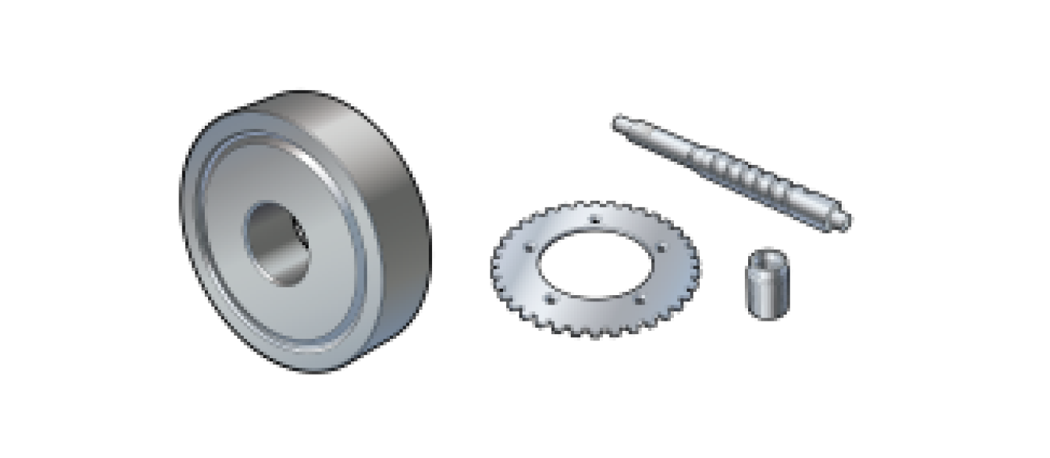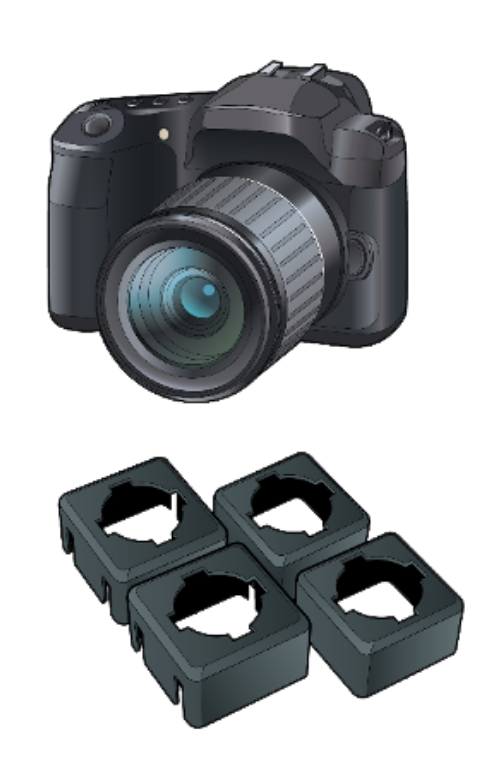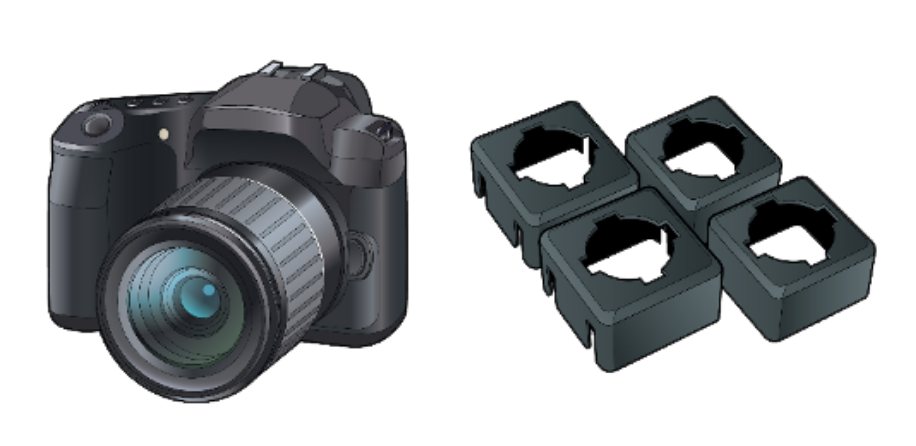



Plating of Mechanical Components
Many metal materials are used in mechanical components, and
in addition to the prevention of wear and corrosion,
plating technology is put to use for a variety of purposes.
In this chapter,
we will learn about the plating technologies used in cars, motorcycles,
timepieces (clocks and watches), and cameras,
which are the most common examples of plating of mechanical components.
What kinds of plating are used on car and motorcycle parts?
There is a lot of plating used in the production of cars and motorcycles. Of course, this includes a lot of plating that is visible, such as that on the exterior parts and the interior parts. However, plating is also required on mechanical components and other parts that are not normally visible and this plating often plays a very important role.
The functions of the plating used on mechanical parts include functions such as surface hardness, wear resistance, lubricity and smoothness.

The surface hardness and wear resistance functions are used to increase the surface strength of parts. The lubricity and smoothness functions are used so that the engine cylinders and gears can be moved smoothly for the efficient transmission of power.
The plating used on the surface of gearwheels is introduced in this video as a representative example of this.
Plating is also performed on the disc brakes that are used on cars and motorcycles.
In disc brake equipment, there is a disc shape on the wheel and the disc is squeezed from both sides by brake pads to reduce the speed of the vehicle. It is extremely important that the discs used in these brakes do not corrode (rust).
If a disc corrodes (rusts), then its strength is reduced and its profile may distort. (In other words, the disc may be damaged or destroyed.) If this happens, then the disc can no longer fulfill its original purpose (i.e. braking). It is absolutely essential that this is avoided. In addition to this, any rust that occurs on the surface of the disc will make the surface rough. This rust may damage the brake pads, which may affect the ability of the brakes to slow the vehicle. When the brakes are used, the rust on the disc surface is removed by the brake pads and does not appear to be a problem. However, the ability of the damaged brake pads does not recover, so it is a major risk factor. Even if the rust has disappeared, the effects of it remain.
Plating technology plays an extremely important role in the safety of the vehicle by preventing the corrosion of the discs.

What kinds of plating are used in timepieces (clocks and watches) and cameras?
Plating and timepieces (clocks and watches)
On timepieces, plating is particularly common on the outside of wristwatches, which are in contact with our skin. This plating is performed for decoration and also for an antibacterial effect. In the case of digital clocks, there are electronic components and circuit boards used inside, so these of course use plating technology. Even on analog clocks, plating is used on many of the precision machinery components.
Plating is used on these precision machinery components to prevent rusting, to create smooth movement and also for dimensional accuracy. It is possible to accurately calculate the thickness of a metal layer from the length of the processing time for the plating, so it is possible to adjust the components to more precise sizes.
Plating and cameras
There has been great technical innovation in cameras in the past ten-odd years as they have moved from film to digital. Precision mechanical components are used in both film cameras and digital cameras, and in the case of single-lens reflex (SLR) cameras, plating is used to impart high rigidity, light-shielding, and other attributes on parts such as the machinery that moves the reflex mirror and the shutter.
On digital single-lens reflex cameras, the mechanical mechanisms are the same as for film cameras. However, there is also an MPU included for the processing of the data and the processing performed is not unlike that of a small computer. Of course, there are also many electronic components included, on which plating technology plays an important role.


Plating was used from the era of film cameras, but the shift to digital has deepened the relationship even further.

In this chapter, we have learned about plating of mechanical components. Cars and motorcycles could be described as an amalgamation of everything about plating, given its extensive use on both their mechanical and electrical parts, as well as their decorative areas.
In devices that are becoming increasingly digitalized, such as timepieces and cameras, plating is used on the mechanical components for mechanical devices and on the electronic components for digital devices. Plating continues to evolve today as a technology that will continue to be used even as forms and styles change.

